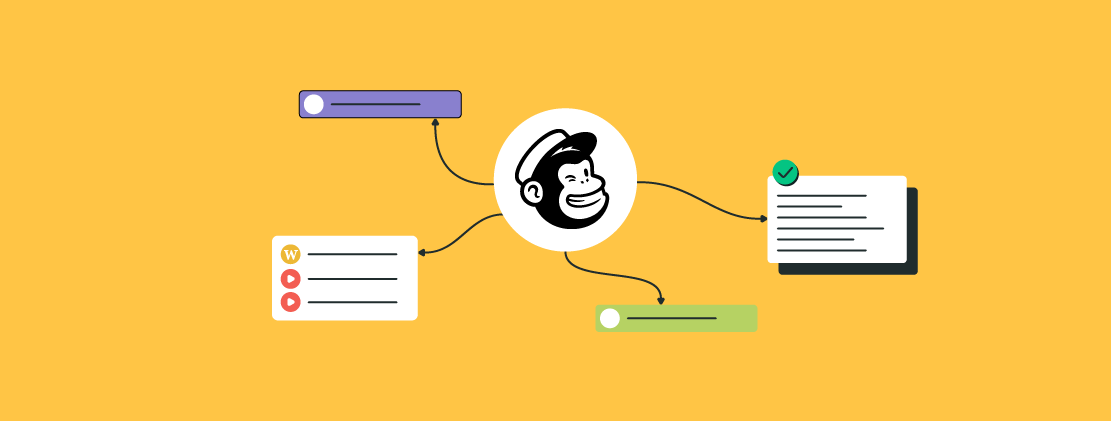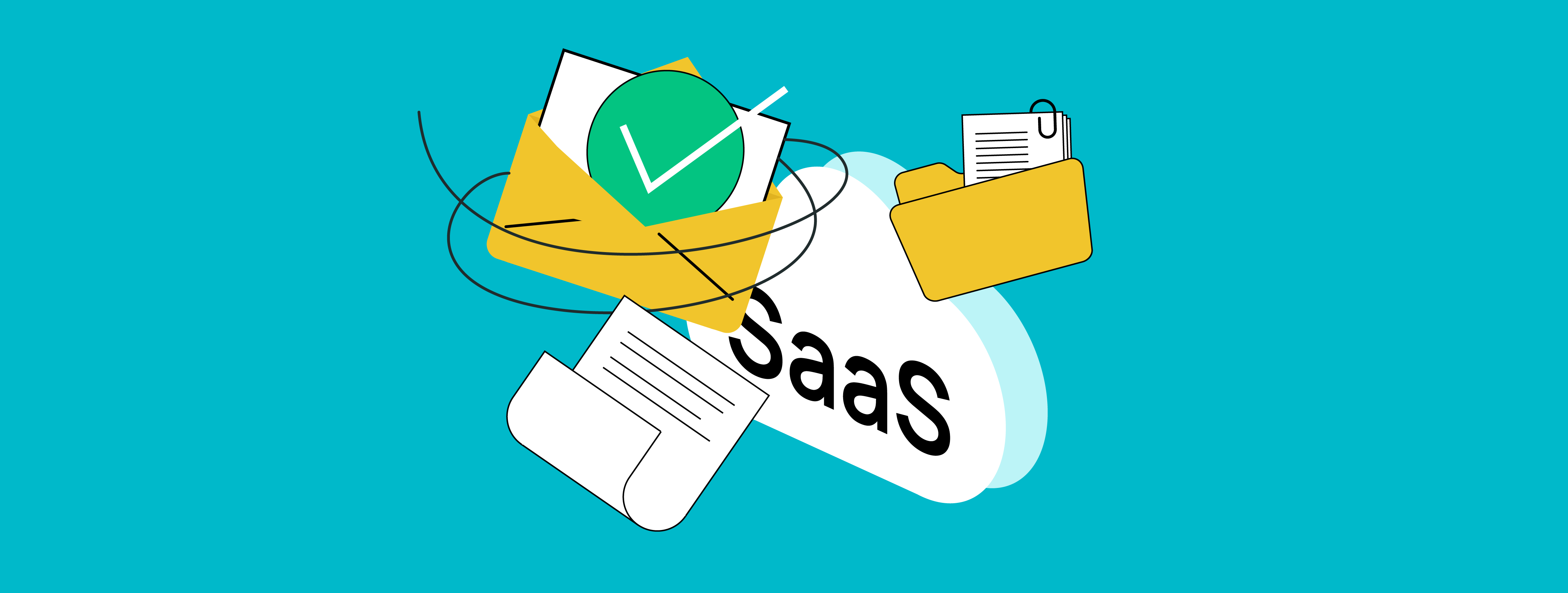Email advertising is a type of marketing performed via email whereby the recipient has consented to receive promotional messages from a brand. In this form of advertising, marketers seek to gain permission from their prospective customers by giving them an option to opt-in before sending emails.
Email advertising is effective only if the recipients expect to hear from you. Achieve this by using opt-in or permission-based marketing. To be ahead of the game, marketers prefer double opt-in, which makes them sure that email campaigns are “welcomed” and “anticipated” by their subscribers. Unsolicited email marketing is already a thing of the past because it hurts the sender’s reputation. It is no wonder — recipients may not be open to receiving promotional emails they haven’t subscribed to.
An example of permission email advertising is an email newsletter sent to customers of a particular brand. Newsletters usually inform subscribers about new products, upcoming events, or promotions. Marketers tell prospects what they will receive after leaving their email address in a subscription form. This way, the leads are aware of what they subscribe to.
Today, many online marketers use services such as SendPulse Email to manage their opt-in contact information and send out advertising messages automatically using automation tools. Furthermore, they allow marketers to segment their advertising activities according to specific personal data.
Why is email advertising essential?
- It is cost-effective and fast
- It allows to reach targeted audiences through segmentation
- It is permission-based
- It shows higher ROI
- It is easy to measure and compare
- It is instant and shareable
Even with the tremendous growth of SEO, social media, and mobile marketing, email advertising remains one of the most profitable marketing strategies. According to Statista, 3.7 billion global email users sent and received 269 billion emails every day in 2017. The figure is expected to grow to 4.3 billion by 2022, which means that about half of the world's population will be using email by then. Therefore, advertising through email will present better business opportunities, as email use continues to increase. However, the decision to invest advertising dollars in this type of marketing should take into account the benefits that the business stands to gain.
So, what advantages can a brand enjoy when using email advertising?
It is cost-effective and fast
The cost of using email as a channel to advertise goods and services is quite lower than most of the other forms of marketing. The business does not incur printing costs as it would with posters or brochures. Also, there are no advertising or media hosting fees for sending advertising messages to the target audience. Moreover, through bulk email sending and automation, marketers can save time on their advertising efforts. With SendPulse, you can send up to 15,000 advertising emails for free every month.
Reach targeted audiences through segmentation
Email advertising solves the numerous shortcomings of non-targeted marketing, such as television ads and billboards. With email, the marketer has more control over who sees their messages by using segmentation. You can group customers based on location, demographics, stage in the sales funnel, etc. and send emails targeting their specific needs.
It is permission-based
The best thing about email advertising is that the recipients who receive the marketing messages are people who are genuinely interested in the goods or services that your business offers. Since you send emails to contacts who have given their explicit permission, your mailing list will consist only of prospects who are likely to convert.
Higher ROI
According to the Data & Marketing Association, every $1 spent on email advertising is expected to return $32 in revenue. Therefore, email marketing is worth the investment as it brings increased sales and conversions. It is an effective strategy at every phase of the buying process. Moreover, less effort is required in this type of marketing as there are email services, like SendPulse, available to assist marketers in performing email advertising tasks.
Let's advertise via email!
Bring in new customers with branded subscription forms and craft a perfect sales strategy with 15,000 free emails each month.
Easy to measure and compare
With email advertising, marketers can quickly assess the success of their ad campaigns. You can follow up on the performance of different emails and use the feedback to improve future campaigns. Moreover, you can compare your campaign results against email advertising benchmark reports in your specific industry. Benchmarking data can be found online. It helps marketers identify problems and make improvements.
It is instant and shareable
An email is delivered immediately, so marketers can see the impact in minutes after sending the campaign. Therefore, email advertising is ideal for persuading leads to take immediate action. For this reason, email remains the primary driver for customer acquisition for 81% of small and medium scale businesses. It is also easy for people to share advertising content with friends and family with email, hence, creating increased brand awareness.
Businesses can increase sales with email advertising with SendPulse using these steps:
- Sign up to create an account
- Create a campaign by choosing an email template, adding a subject line and text
- Review the email and send
- Track statistics and improve
Email Advertising Examples
Here are some excellent email advertising examples from different brands:
Chain Reaction Cycles offer free tires with selected wheelsets. Besides, they add clients’ reviews to make gain subscribers' trust.

Art.com offers 30% off Canvas art pieces and appeal to subscribers’ preferences. A discount is a great chance to sell overstocked goods.

Kate Spade uses email advertising to tell their clients about their new arrivals.

Email Advertising Best Practices
- Make the subscription process easy
- Use double opt-in
- Avoid spamming
- Schedule advertising emails
- Perform split-testing
Below are some email advertising best practices every marketer should implement:
Make the subscription process easy
Marketers should make the sign-up process straightforward and enticing so that people subscribe easily. Ask only for the information you can use for better performance. For example, you can craft more personalized campaigns having the following data: name, age, gender, occupation, place of residence, etc.
Use double opt-in
We recommend using a double opt-in process because it ensures customers provide their unwavering consent to receive marketing emails from a particular brand. The double opt-in email should be short, sweet, and focused on the confirmation button.
Avoid spamming
Marketers should be careful when collecting email subscribers and engaging with them. Signing people up without their approval or buying email lists is a no-no. While writing messages, it is essential to provide relevant content, avoid uppercase subject lines, and so forth. Marketers ought to ensure that their emails have an unsubscribe option and physical address, as well. It's also a good idea to use a custom email domain as it enhances your professional image and brand identity, making your communication more credible and memorable.
Schedule advertising emails
Email advertising is most effective when you send emails to customers at the appropriate time. Thus, it is crucial to segment mailing lists based on time or time zones when catering to an international market.
Perform split-testing
With split-testing, marketers determine the content, subject lines, CTAs, send time, etc. that are right for their market segment. It is essential to split-test new things to ensure that your email advertising is successful.
FAQ
❤️ How is SendPulse useful for email advertising?
SendPulse offers effective tools for creating and sending advertising emails. You can create emails from scratch or use one of the free pre-designed templates. Additionally, you can schedule or automate your advertising campaigns with ease. Enrich communication with your audience by sending SMS and web push notifications alongside your emails. With SendPulse, you can collect subscribers with free subscription forms, manage your mailing list, segment, and personalize the marketing messages you send to your audience.
⚖️ How do I send advertising emails legally?
You must abide by the CAN-SPAM Act in the United States or other anti-spam laws, depending on your location. It requires using an authorized domain address, opting in users, adding an unsubscribe link to all of your emails, and your company’s legal address. Otherwise, most email providers will direct your emails to the spam folder. To send email advertising legally, use a professional bulk email service, like SendPulse, which helps you gather an opt-in audience, and keep up with the law.
🤔 What should be in an advertising email?
A quality advertising email begins with an eye-catching subject line to engage more opens. In the email, write a clear and concise copy focusing on your product’s key features to capture users’ attention. Add a strong incentive like a time-limited offer or a considerable discount to encourage recipients to make their decision. At the bottom, place a call-to-action button that will finally direct them to the particular page on your website.
📨 What is an email advertising blast?
It means sending one advertising email to the entire list of subscribers. You should know that this technique has proven to be ineffective. A better way to do email advertising is to segment your audience with SendPulse. Divide your mailing list based on common characteristics like age, gender, location, etc. Sending personalized emails to different segments dramatically increases engagement and, eventually, boosts sales too. Here’s everything you need to know about personalization.
💭 How do I send advertising emails with Gmail?
Gmail was not designed for email advertising. If you want to send promotional campaigns to your audience, choosing a reliable bulk email sender, like SendPulse, is a better option. Unlike Gmail, which limits you to 500 recipients daily, SendPulse allows you to work with mailing lists of any size, use free customizable email templates, and set up automation without much sweat.
⌚ What is the best time to send an advertising email campaign?
You can never know for sure until you’ve run an A/B test with SendPulse. Send one email campaign to two or more groups of subscribers at different times — and you will know precisely which time works best for specific segments of your audience. Here’s a blog article where we studied the best time for sending emails.
Last Updated: 21.12.2023




or